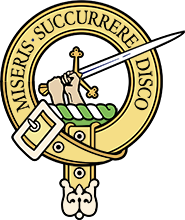Forenames/given names in the Highlands.
The naming customs common throughout Scotland until the 20th century perhaps hang-on longest in the Highlands, and may be most thoroughly observed in parts of the Gaidhealtachd where couples whose fathers or mothers share the same given-names often have as a consequence at least two children given the same forename. In such circumstances however the name actually used for and by one of these children will probably be different from that they were baptised with - or will be qualified with a byname or nickname to distinguish him or her from the sibling with the same given name (and indeed from cousins sharing the same names). When the commonly used forename is not the given-name it's quite possible it's the former name that will eventually appear on a death entry or a gravestone - particularly if the deceased dies far from home, or if the informant is not a close relation. While bynames and nicknames will often refer to homes and occupations and therefore be explicable to an outside researcher, in many cases they will be linked to a family or local story about the person concerned which will only be explicable by a relative or inhabitant of the locality in question.
Gaelic/English forename equivalents.
Though Gaelic names may appear in modern records, most registers, certificates, and censuses in the Gaidhealtachd before the mid-20th century would have employed English equivalents of the Gaelic names used orally. Unfortunately English-speaking clerks in various parts of the Highlands had differing ideas as to what the appropriate English equivalent was for particular Gaelic names. One of the most common examples is the Gaelic name Domhnall which may be given in English as both Donald and Daniel; which means that researchers looking for records of a Daniel and failing to find them may have better luck looking for Donald instead. This example is relatively straightforward - one Gaelic name, and two possible English equivalents - but many are far more complicated. For instance, though there are separate Gaelic equivalents of Peter (Peadair) and Patrick (Padruig), the names Peter and Patrick were often considered interchangeable in exactly the same way as Donald and Daniel. Even more complicated is the situation regarding the English name Hugh, since there are three Gaelic names for which this was often the equivalent: Aoidh, Uisdean, or Eoghan. The last of these however is also the usual equivalent of Evan/Ewen/Owen (note the variations in spellings of the English version) - which in turn are sometimes taken to stand for the Gaelic Eion, a name that can also appear in English as John, for which the usual Gaelic equivalent is Iain (itself now a name often used separately by English speakers).
Unfortunately there are no rules governing these equivalents and one simply has to know all the possible combinations to be sure of missing nothing. Hence the length of the lists Forenames - Gaelic to English and Forenames - English to Gaelic. It should be noted that these lists also contain Latin equivalents, since that was the language used in many legal documents until relatively modern times. The use of the Latin Aeneas for Angus - in Gaelic Aonghus - is a common and obvious example, but there are many which are by no means so straightforward. For instance the Gaelic Donnchadh, which usually appears in English as Duncan, can also be transformed via the Latin Dionysius, into Dennis - not a name commonly associated with the Highlands of Scotland.
